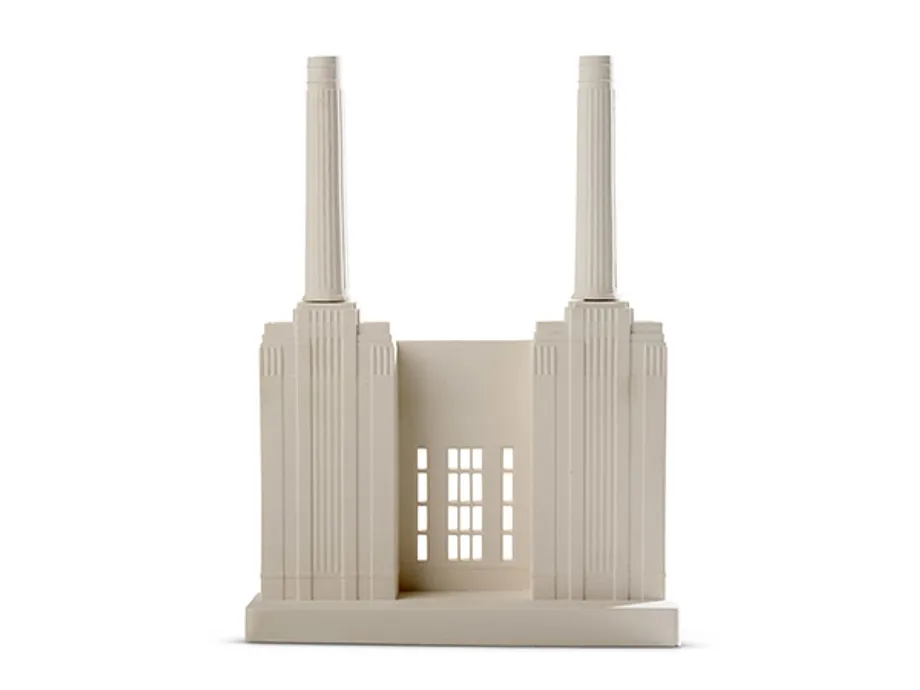Buildings are man-made structure with roofs and walls standing more or less permanently in one place, such as houses or factories.
Buildings come in various shapes, sizes and functions, and have been adapted throughout history to accommodate a wide number of factors such as; building materials available; weather conditions; land prices; ground conditions; specific uses; and aesthetic reasons.
Infrastructure refers to the fundamental facilities and systems serving a country, city or area, including the services and facilities necessary for its economy to function.
It typically characterises technical structures such as roads, bridges, tunnels, water supply, sewers, electrical grids, and telecommunications.
Battersea Power Station model
This plaster architectural sculpture of Battersea Power Station's northern chimneys is made by the firm Chisel & Mouse. Battersea power station was built in 1933 in Art Deco style and its exterior was designed by the architect Sir Gilbert Scott. Battersea Power Station is a decommissioned coal-fired power station. It comprises two individual power stations, built in two stages.
Battersea A Power Station was built in the 1930s , with Battersea B Power Station to its east in the 1950s. The two stations were built to an identical design, providing the well-known four-chimney layout. The station ceased generating electricity in 1983. Donated by Chisel & Mouse
Located in the heart of London

